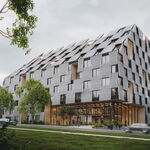Hamilton said he never expected to see a GO Transit fare card reader at the UP Express stop at Union because GO trains operate out of a completely separate part of the station.
Metrolinx said it put a GO Presto reader near the UP Express platform at Union in part to allow commuters travelling between Union and the Bloor and Weston stops on the airport service to have the trips count toward the GO loyalty program that provides free rides at the end of the month for frequent users.
Ferguson said Metrolinx is “working to improve the user experience” and is launching a pilot initiative at Union “to test out designs that would better visually distinguish the two types of machines.”
According to Olivier St-Cyr, an assistant professor at the University of Toronto’s faculty of information and an expert in user experience design, public-facing technical systems that rely on people to correctly interpret visual cues like signage are often the least effective.
“People can be relied on to some extent, but if they have to remember too many pieces of information or the information becomes complex, then yeah, people will fail,” he said.
St-Cyr said visual cues are particularly likely to be ineffective in an environment like a busy train station, where there are already multiple signs competing for people’s attention and customers are rushing to their destinations.
He argued it would be ideal to just have one type of machine, but if that’s not possible Metrolinx could design a system that prevents people from choosing the wrong device. For example, he suggested that if possible the devices could be programmed to reject a customer’s payment if they end their journey by tapping their card on a different colour device than the one they started with.
“Getting a clear system that works that doesn’t require people to remember things and process extra information to make a decision is the ultimate goal,” he said.






/https://www.thestar.com/content/dam/thestar/news/gta/2019/02/05/up-express-rider-charged-17126-extra-after-confusion-over-duelling-presto-machines/silver_presto.jpg)